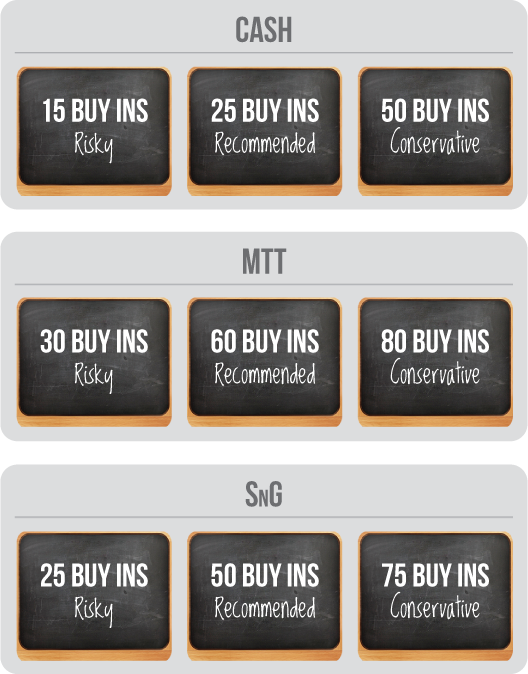Video Poker Bankroll
If you’re playing quarters or dollars, then your session bankroll should be at least 200 times the size of your average bet. On five-dollar slots and above, 150 bets should keep you going up to three hours.
By Henry Tamburin
When I first started teaching video poker a few years ago, astudent asked me this question: “How muchbankroll do I need?” I suggested that a lifetime bankroll equal to
It turns out there are ways to estimate session bankroll forvideo poker using mathematical equations and customized computer simulations.But I decided to use a commercial software program instead because, a) it wasmore fun to do, and b) it was something I could show students during class tohelp them understand session bankroll requirements (and also volatility).

I used the Frugal Video Poker (FVP) software to conduct mystudy because it draws a graph showing the peaks and valleys of your bankrollduring a playing session and more importantly it calculates the player’s lowpoint. The latter is the greatest amount of money that you were down during asession. It’s an important number because if you don’t have at least that muchmoney, you will tap out and not be able to complete the session.
How Big Should My Poker Bankroll Be Married

To conduct the study I assumed that the average player plays500 hands per hour over 2 hours or a total of 1,000 hands. The game I decidedto simulate was 9/6 Jacks-or-Better because it is readily available in mostgaming jurisdictions and it has a relatively low volatility compared to othervideo poker games (more about volatility in a moment).
Using the FVP software’s “computer play” function, I set thecomputer to play a short session of 1000 hands on a 9/6 Jacks-or-Better machineusing the Strategy Play mode with the maximum of five coins bet per hand.
The results of the study were dramatic.
If you glance at the figures in Table 1 you’ll get anappreciation at what we mean by video poker volatility. Your bankroll willoften take a wild ride because so many of the big payouts occur with hands thatdon’t appear very frequently. The result is that we need a big bankroll orcushion to sustain us between those rare jackpot hands otherwise our sessionwill be cut short.
So what’s an acceptable cushion? Let’s suppose you broughtalong $100 to play a 2-hr session. The data in Table 2 are the low points foreach of the 30 computer generated sessions (listed in Table 1) that I sortedfrom lowest to highest. With a $100 session bankroll, Table 2 shows that youwould have run out of money in 9 of the 30 sessions.
Keep in mind that the $170 is a rough estimate of sessionbankroll because I only ran 30 computer sessions (which is a relatively smallsampling of data) and most players don’t play as accurately as a computer does.So I throw in a fudge factor and advise students to bring $200 with them. This shouldprovide them with a comfortable cushion to sustain them during a 2 hoursession. Of course this assumes that they are not making any major playingstrategy mistakes (if they are, they’ll need an even larger bankroll).
The $200 seems like a lot of money to play a full pay,quarter, 9/6 Jacks-or-Better machine for 2 hours. But that’s the reality ofvideo poker. It’s a volatile game and if you have less bankroll, you run a greaterrisk of tapping out in the middle of your session.
The results of my study agree closely with a similar studydone by Viktor Nacht that appears in Jean Scott’s upcoming book,

You might be wondering about the big win in session #28(Figure #1). Fortunately, the player hit a royal flush in that computergenerated session for a $1,000 payoff. This is not a frequent event and thefact it occurred during one of my 30 computer generated trials was just luck(you can expect a royal flush about once in every 40,000 hands, a major reasonfor the volatility in Jacks-or-Better).
Keep in mind that your session bankroll will depend upon thegame you play, the number of hands played, and of course the denomination thatyou are playing. For example the volatility and bankroll requirement for DeucesWild are greater than Jacks-or-Better. Likewise playing multi-lines (
The bottom line is that if you want to avoid thedemoralizing experience of prematurely running out of money in the middle ofyour session, figure out beforehand how much cash to bring for the game youintend you play. That’s the smart way to play video poker.
Poker Bankroll Calculator
Session # | Low Point ($) | Session W/L($) | |
1 | -48.75 | +156.25 | +150.00 |
2 | -168.75 | 0 | -163.75 |
3 | -82.50 | +2.50 | -51.25 |
4 | -127.50 | 0 | -125.00 |
5 | -38.75 | +53.70 | -20.00 |
6 | -16.25 | +103.70 | +35.00 |
7 | -10.00 | +77.50 | +25.00 |
8 | -7.50 | +125.00 | +40.00 |
9 | -88.00 | +11.25 | -96.25 |
10 | -103.75 | +46.25 | +11.25 |
11 | -97.50 | +73.75 | -87.50 |
12 | -55.00 | +43.75 | -76.25 |
13 | -28.75 | +42.50 | +42.50 |
14 | -95.00 | +20.00 | -90.00 |
15 | -35.00 | +108.75 | +100.00 |
16 | -26.50 | +33.75 | -16.25 |
17 | -113.75 | +17.50 | -100.00 |
18 | -141.25 | +5.00 | -122.50 |
19 | -27.50 | +65.00 | +38.75 |
20 | -41.25 | +132.50 | +116.25 |
21 | -61.25 | +26.25 | +3.75 |
22 | -140.00 | +36.25 | -157.50 |
23 | -6.25 | +118.75 | +60.00 |
24 | -90.00 | 0 | -113.75 |
25 | -150.00 | 0 | -140.00 |
26 | -133.75 | +42.50 | -132.50 |
27 | -162.50 | +43.75 | -115.00 |
28 | -8.75 | +1048.75 | +987.50 |
29 | -75.00 | +30.00 | -71.25 |
30 | -92.50 | +1.25 | -50.00 |
Low Points Sorted ($)
(negativesign omitted)
6.25 | 82.50 |
7.50 | 88.00 |
8.75 | 90.00 |
10.00 | 92.50 |
16.25 | 95.00 |
26.50 | 97.50 |
27.50 | 103.75 |
28.75 | 113.75 |
35.00 | 127.50 |
38.75 | 133.75 |
41.25 | 140.00 |
48.75 | 141.25 |
55.00 | 150.00 |
61.25 | 162.50 |
75.00 | 168.75 |